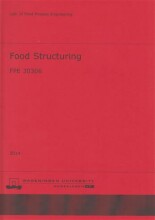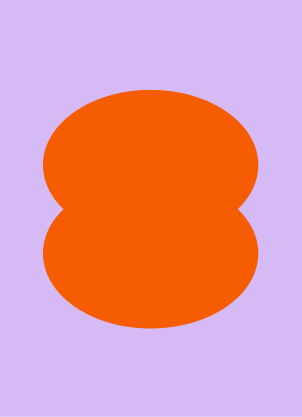Try our study magic for free
Summary: Physical Aspects
- This + 400k other summaries
- A unique study and practice tool
- Never study anything twice again
- Get the grades you hope for
- 100% sure, 100% understanding
Remember faster, study better. Scientifically proven.
a PDF, study it super fast
- No sign up, email or credit card needed!
- AI makes unlimited flashcards
- Get unlimited quizzes and tests
- Ask AI anything
Create a notebook
- No sign up, email or credit card needed!
- Have and keep perfect overview
- Make flashcards, notes and mind maps
- Review, test and score!
Read the summary and the most important questions on Physical aspects
-
1 Basic physical concepts in food matrices
-
1.1 Solid states in food systems
-
Which 2 physical states are there in solid systems?
- Crystalline
- Amorphous
- Crystalline
-
What is the difference the between crystalline and amorphous state?
Crystalline material -->atomic order atlarge scale- Amorphous --> no specific ordering of the atoms in the material
-
How are crystalline and amorphous materials made?
- Slow cooling --> atoms in material have time to order themselves --> crystalline state is formed
- Faster cooling --> molecules slow down fast enough to prevent ordering of the molecules --> amorphous state
- Slow cooling --> atoms in material have time to order themselves --> crystalline state is formed
-
What happens when you heat up a crystalline material?
Theordered state will fallapart due to moremolecular movement and thesolid turns into aliquid at the melting temperature. -
What happens when you heat up an amorphous material?
- The
disordered arrangement of the solidmaterial canrearrange. Above the glass temperature, the ability for rearrangement is high enough for it to move, and the material is called a rubber. Even higher T (melting temperature) --> convert into a crystalline state, where the molecules have an ordered arrangement
- The
-
1.1.1 Interactions of water with solids
This is a preview. There are 4 more flashcards available for chapter 1.1.1
Show more cards here -
In which 2 ways can water interact with solids?
- Adsorption on the surface of a solid (often a crystalline structure)
- Adsorption within a solid (often amorphous)
- Adsorption on the surface of a solid (often a crystalline structure)
-
What does the sorption of water by crystalline and amorphous structures (sugars, polymers and proteins) depend on?
- Affinity of the material for water
- The relative humidity
- Physical state of the solid
- Affinity of the material for water
-
Where does the sorption of water occur in crystalline solids?
At the crystal surface. As the solid is already in an ordered arrangement, there is not space for the water to diffuse into. As the water cannot go into the solid, the sorption of water for crystalline solids is limited. -
When can the sorption capacity of crystalline solids be larger?
When the solid has some impurities (some holes in the structure), the water might be able to fill this open spot in the arrangement. -
How does sorption of water in amorphous solids (amorphous sugar, proteins and polymers) occur?
It has a less well-defined ordering. This will allow the water to diffuse into the material and fill the spaces in between the disordered molecules. These spaces, or 'sites' will fill up with water, and sorption within the material occurs.
Read the full summary
This summary +380.000 other summaries A unique study tool A rehearsal system for this summary Studycoaching with videos
- Higher grades + faster learning
- Never study anything twice
- 100% sure, 100% understanding
Topics related to Summary: Physical Aspects
-
Basic physical concepts in food matrices - Solid states in food systems
-
Basic physical concepts in food matrices - Hydrophilic-lipophilic balance
-
Ice cream - Freezing point depression
-
Ice cream - Ice formation - Nucleation and growth
-
Ice cream - Ice cream/sorbet ingredients
-
Ice cream - Microstructure of ice cream
-
Ice cream - Effect of emulsifiers and stabilizers
-
Ice cream - The four microstructure elements - Ostwald ripening and accretion
-
Ice cream - The four microstructure elements - Anti-freeze proteins
-
Ice cream - Making ice-cream
-
Ice cream - Rheology
-
Ice cream - Sensory properties
-
Chocolate - Main ingredients
-
Chocolate - Chocolate milling and conching
-
Chocolate - HIPs
-
Chocolate - Rheology of chocolate
-
Chocolate - Emulsifiers
-
Chocolate - Structure of cocoa butter
-
Chocolate - Tempering
-
Chocolate - Effect of fat additions
-
Chocolate - Fat bloom
-
Chocolate - Phase transition: from chocolate to Ganache
-
Chocolate - Shelf life
-
Chocolate - Special chocolates
-
Water diffusion in bread
-
Bakery products - Effect of water
-
Bakery products - Retrogradation
-
Bakery products - Effect of freezing/pH
-
Bakery products - Effect of additives
-
Bakery products - DSC
-
Bakery products - Rheology of dough and effect on bread
-
Bakery products - Gluten-free dough
-
Bakery products - Effect of fat addition/emulsifiers - Available fats
-
Dissolution of powders - Solubility of powders
-
Cooking techniques
-
Flavor release - Flavor binding - Polysaccharide-flavor interactions
-
Flavor release - Low-fat products



























